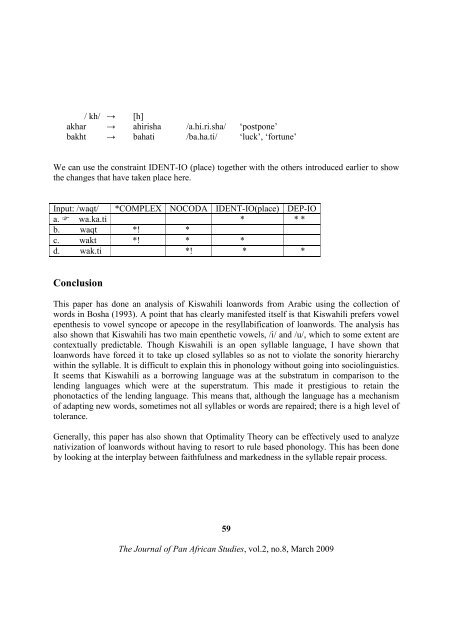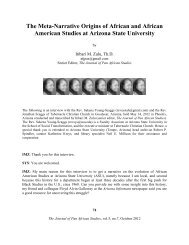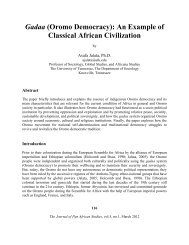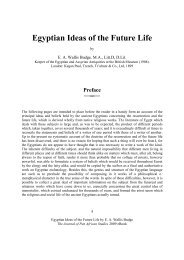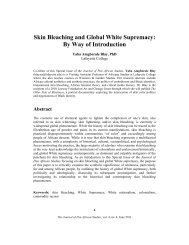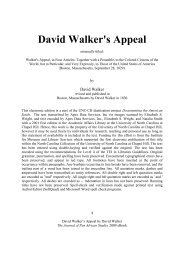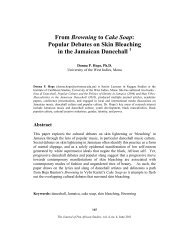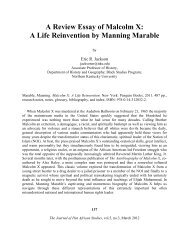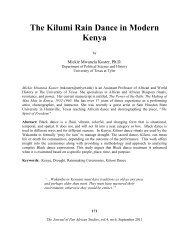The Adaptation of Swahili Loanwords From Arabic - Journal of Pan ...
The Adaptation of Swahili Loanwords From Arabic - Journal of Pan ...
The Adaptation of Swahili Loanwords From Arabic - Journal of Pan ...
You also want an ePaper? Increase the reach of your titles
YUMPU automatically turns print PDFs into web optimized ePapers that Google loves.
kh/ → [h]<br />
akhar → ahirisha /a.hi.ri.sha/ ‘postpone’<br />
bakht → bahati /ba.ha.ti/ ‘luck’, ‘fortune’<br />
We can use the constraint IDENT-IO (place) together with the others introduced earlier to show<br />
the changes that have taken place here.<br />
Input: /waqt/ *COMPLEX NOCODA IDENT-IO(place) DEP-IO<br />
a. � wa.ka.ti * * *<br />
b. waqt *! *<br />
c. wakt *! * *<br />
d. wak.ti *! * *<br />
Conclusion<br />
This paper has done an analysis <strong>of</strong> Kiswahili loanwords from <strong>Arabic</strong> using the collection <strong>of</strong><br />
words in Bosha (1993). A point that has clearly manifested itself is that Kiswahili prefers vowel<br />
epenthesis to vowel syncope or apecope in the resyllabification <strong>of</strong> loanwords. <strong>The</strong> analysis has<br />
also shown that Kiswahili has two main epenthetic vowels, /i/ and /u/, which to some extent are<br />
contextually predictable. Though Kiswahili is an open syllable language, I have shown that<br />
loanwords have forced it to take up closed syllables so as not to violate the sonority hierarchy<br />
within the syllable. It is difficult to explain this in phonology without going into sociolinguistics.<br />
It seems that Kiswahili as a borrowing language was at the substratum in comparison to the<br />
lending languages which were at the superstratum. This made it prestigious to retain the<br />
phonotactics <strong>of</strong> the lending language. This means that, although the language has a mechanism<br />
<strong>of</strong> adapting new words, sometimes not all syllables or words are repaired; there is a high level <strong>of</strong><br />
tolerance.<br />
Generally, this paper has also shown that Optimality <strong>The</strong>ory can be effectively used to analyze<br />
nativization <strong>of</strong> loanwords without having to resort to rule based phonology. This has been done<br />
by looking at the interplay between faithfulness and markedness in the syllable repair process.<br />
59<br />
<strong>The</strong> <strong>Journal</strong> <strong>of</strong> <strong>Pan</strong> African Studies, vol.2, no.8, March 2009


